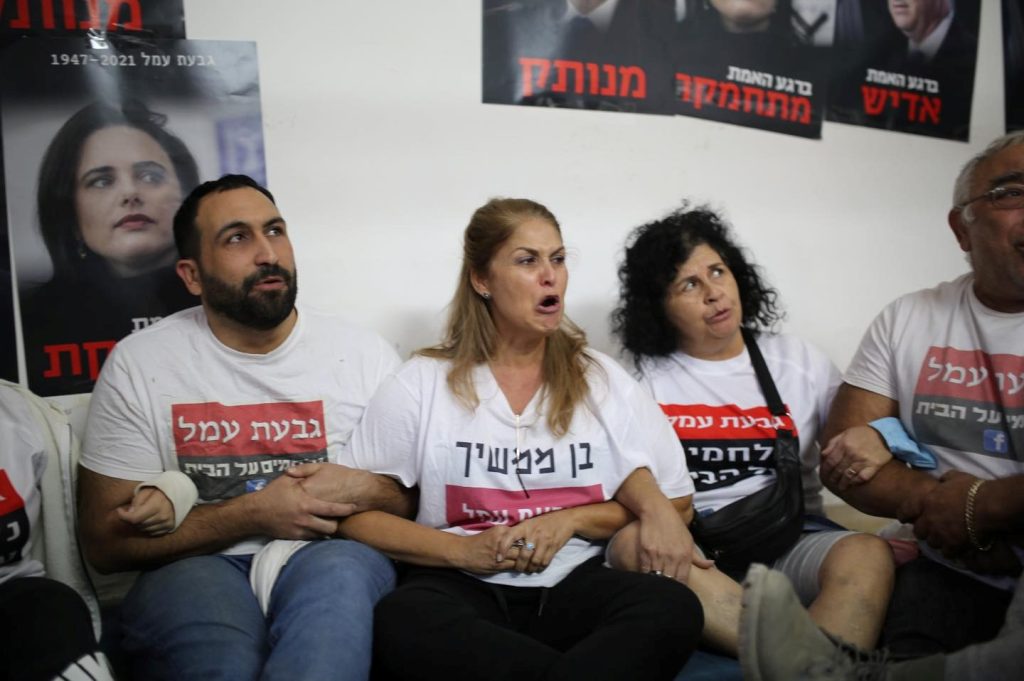Police brutally evicted the final 32 families from Tel Aviv’s Givat Amal working-class neighborhood on Monday, November 15, after 60 years of legal battles and demonstrations, despite the fact that no agreement was reached with them regarding alternative housing or compensation.
All the families are Mizrahi Jews (of Middle Eastern or North African origin) who were settled by the Zionist authorities in a formerly Palestinian Arab village with their arrival in Israel after the founding of the state. As in hundreds of other cases of massive Jewish settlement in abandoned Arab locales within what would ultimately be called “Israel within the Green Line,” the salient reason for this settlement was to prevent the eventual return of the Palestinian-Arab refugees. Over the years, the Mizrachi Jews residing in Givat Amal and their supporters adopted the dominant Zionist narrative, but argued that “racism” was playing a role in their mistreatment by the government in its refusal to grant them outright ownership of their homes. Ahead of Monday’s evacuations, the residents of Givat Amal barricaded themselves in their homes, along with activists who arrived to support them, among them members of Hadash and the Communist Party of Israel.
Residents of Givat Amal and supporters just before their final eviction, Monday, November 15, 2021
(Photo: Zo Haderech)
Towards Monday’s eviction operation, a massive police contingent was deployed along the main road bordering the neighborhood, which serves as a major access point into Tel Aviv from the Ayalon Highway and Ramat Gan, as well as throughout the neighboring Bavli neighborhood to the north.
Activists were on site to support the residents when the evictions began. Many had spent the previous night there, hanging posters and spray-painting homes with slogans against Bennett’s government, including: “We won’t give up in the war for our homes”; “Mapai [Labor party — Israel’s first ruling party] started, Likud continued; What will the ‘government of change’ do?”
Hopes that the current government would overturn the years old eviction decisions went unfounded. The anger and disappointment of the residents towards the government’s indifference to their plight was reflected in the posters and signs plastered across the neighborhood bearing the faces of far-right Justice Minister Gideon Sa’ar and Interior Minister Ayelet Shaked, holding them accountable for the decision, along with Tel Aviv Mayor Ron Huldai, historically linked to the Labor party.
Givat Amal is one of Tel Aviv’s poorest neighborhoods, despite being situated in one of the city’s wealthier locations. The area has been described as “one of the most sought-after real estate areas” in the country, which is what led to the legal battle that began in 2005 when a development project led by business tycoon Yitzhak Tshuva was first approved for Givat Amal. The company’s plans called for tripling and gentrifying the area’s population by constructing seven luxurious high-rise buildings, and displacing the previously settled Jewish population, many of whom had lived there since the early years after the founding of the state, but without ownership rights. In fact, the last legally recognized residents of the area were the Palestinian Arabs of Al-Jammasin Al-Gharbi, numbering some 1,250 persons in 1948, who were uprooted during the 1948 war and whose rights to return to or be compensated for their abandoned property have been systematically denied by Israel ever since.
Related:



